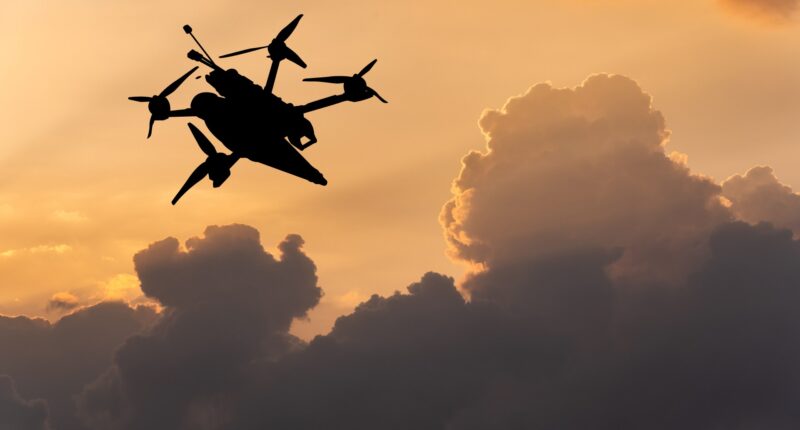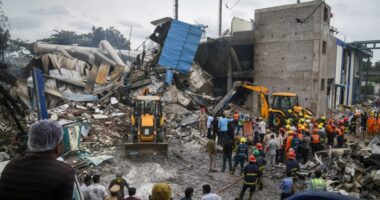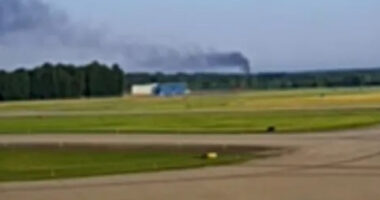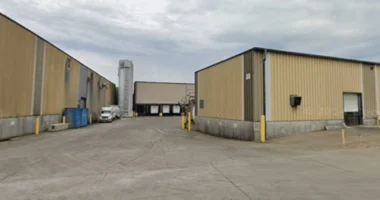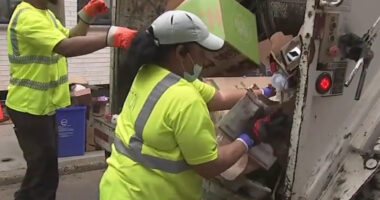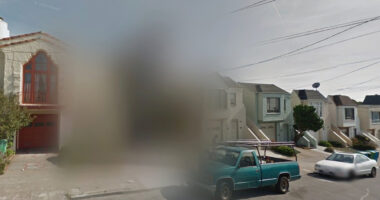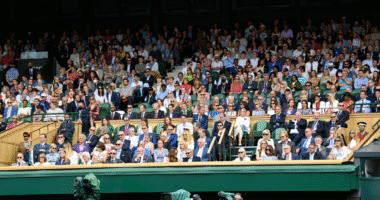COMBAT drones have now become the dominant killer on the battlefields of Ukraine, The Sun on Sunday can reveal.
Up to 80 per cent of casualties on both sides of the conflict have been caused by what are known by the military as “unmanned air systems”.



According to Western officials, the majority of soldiers being killed and wounded in the conflict are being targeted remotely by devices controlled by young soldiers who are often miles away from the front line.
Western officials have provided statistics indicating that the Russians have suffered over 900,000 casualties, including 250,000 fatalities, marking the highest number of battle losses since the Second World War. It is estimated that it will take the Russians up to five years to rebuild their armed forces, including both troops and equipment.
Furthermore, there are currently more than 70,000 Russian troops who have suffered the loss of limbs during the war, a number that is approximately equivalent to the total number of soldiers serving in the British Army.
In addition to casualties, Russia has lost more than 10,000 tanks, 22,000 armoured personnel carriers, 26,000 pieces of artillery, 700 aircraft and helicopters, 28 ships and one submarine.
‘Astonishing figures’
Unmanned air vehicles have replaced traditional artillery strikes against opposition targets and now account for between 70 and 80 per cent of Russian and Ukraine military casualties, the officials added.
They revealed that, from January to March this year, Russia has fired 10,500 glide bombs — devices built by adding fold-out wings, fins and satellite navigation to old Soviet explosives.
They are dropped from planes many miles away from Ukraine air defences and can glide for up to 45 miles before striking their targets.
UK defence experts have warned that the nature of warfare is changing rapidly and that we must also start building our own squadrons of attack drones.
Russia has turned so-called 500lb and 1500lb “dumb bombs” into highly accurate weapons.
As well as steering themselves, the bombs are very accurate and cost around £20,000 each, which is relatively cheap for precision weapons.
Last year Russia announced that it was starting development on a new glide bomb called a Drel, based on cluster munitions, which have been banned by more than 100 countries.
Cluster bombs can have a devastating effect on buildings, air defence and armoured vehicles.
The officials also added that Ukraine is being hit with at least 100 one-way attack drones every day — around one every 15 minutes.
These weapons, which are also known as suicide drones, are cheap to produce and highly effective.
These astonishing figures have shown that drones will play a significant role in all future military campaigns.
Colonel Phil Ingram
They include the Shahed-136 — a one-way attack drone used by Russia in Ukraine, imported from Iran and adapted with new guidance systems and electronic counter-measures.
The other drone widely used by the Kremlin is the Shahed 238, a jet-powered version of the Shahed 136, which can fly higher and faster, making it more difficult to intercept.
Suicide drones can loiter in a specific area before being given a target to attack and have been used against both civilian and military targets.
Colonel Phil Ingram, a former British Army intelligence officer, said it was clear that drones had changed the nature of modern warfare.
He told The Sun on Sunday: “These astonishing figures have shown that drones will play a significant role in all future military campaigns.
Britain cannot afford to be left behind and must make sure it is properly equipped with these new weapons.”
Ukrainian commanders have also revealed that the military’s reliance on drones is not just tactical but increasingly essential.
A shortage of artillery shells and highly capable US High Mobility Artillery Rocket System missiles means that drones have been used to fill critical gaps.
With a decrease in ammunition, including fewer rockets from US-supplied High Mobility Artillery Rocket System missile systems, drones have filled the critical gaps.


Trojan Horse
Ukrainian drone operators have now become so effective that they are a primary target for Russian counter-strikes.
Drone pilot Sgt Major Vasyl said that Russia was attacking drone teams using 1,000lb glide bomb munitions that are fired from the air and are usually used to target buildings or defensive positions.
He revealed: “If they detect a drone operator, everything is thrown at us.”
Ukraine has also developed drones containing computer viruses — known as Trojan Horse drones — which are designed to be captured so they can help reveal the locations of Russian drone operators.
The development adds a cyber warfare dimension to a battlefield already transformed by the latest technology.
Russian forces found Ukrainian drones carrying malware, evidence of which appeared in a video shared on social media.
According to one post featuring a video, the malware “attacks” Russian computer systems causing the USB port to burn out, or hijacking the repurposed drone and revealing the Russian troops’ location.
The Ukrainians have also fitted drones with machine guns, shotguns, flame-throwers and explosives.
UK forces have trained 450 Ukrainian soldiers in critical frontline first aid as part of Operation Interbow.
The six-week training course includes a final assessment where troops deal with serious injuries including mock drone wounds.
Meanwhile, the Government has pledged to deliver hundreds of thousands of drones to Ukraine using £350million of a £4.5billion aid fund.
Another £100million will be provided by Norway as part of the Ukraine Defence Contact Group, which met in Brussels on Friday.
It will include high manoeuvrable first-person view drones to attack targets, and drones which can drop explosives on Russian positions.
These two types of drones are reported to be responsible for 70 per cent of damage currently caused to Russian equipment.
Defence Secretary John Healey said: “The work of the Ukraine Defence Contact Group is vital to put Ukraine in the strongest possible position.”
Peace deal carve-up like post-war Berlin

UKRAINE could be carved up like Berlin after World War Two as part of a peace deal, Donald Trump’s top negotiator has said.
Keith Kellogg revealed British and French troops could take control of the west of the country while Putin’s forces remain in the occupied East.
A “coalition of the willing” led by British and French troops would be “not provocative” to Russia, former US Army General Kellogg claimed.
He told The Times: “You could almost make it look like what happened with Berlin after World War Two, when you had a Russian zone, a French zone, a British zone, and a US zone.”
Kellogg, who previously said Putin may have to give up land to reach a deal, was barred from peace talks last month when Russia complained he was “too close” to Ukraine’s President Volodymyr Zelensky.
He was replaced by Trump’s Middle East envoy Steve Witkoff on Friday in a four-hour meeting with Putin, with the Kremlin and the US refusing to reveal what progress was made.
The Kremlin said only that the meeting, in St Petersburg, focused on a “Ukrainian settlement”.
Trump previously told Putin to “get moving” to end the war.
